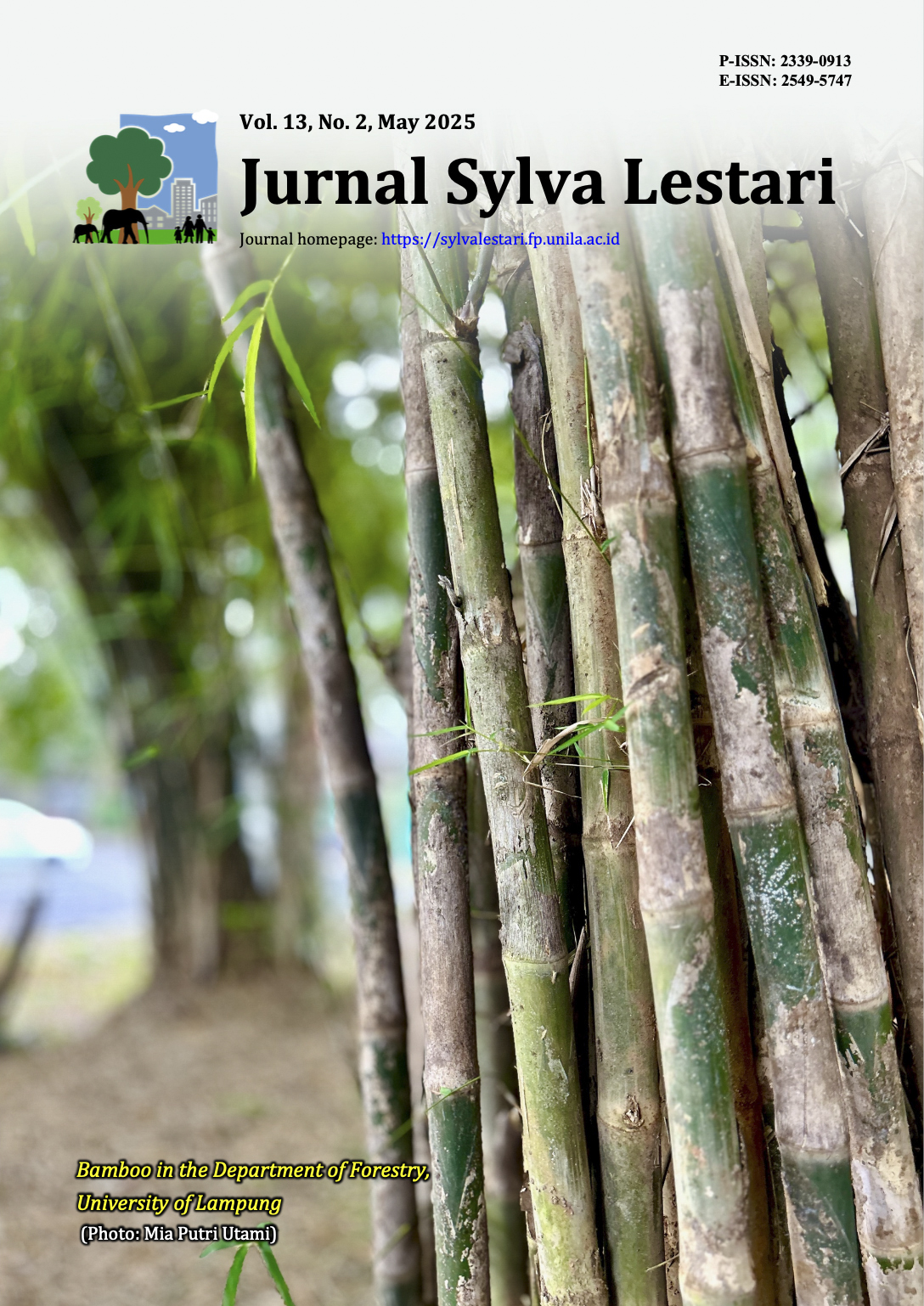Carbon Footprint Analysis and Tourist Satisfaction of 4As at an Ex-situ Conservation Institution
DOI:
https://doi.org/10.23960/jsl.v13i2.1093Abstract
Taman Safari Indonesia (TSI), an ex-situ conservation institution in Puncak, Bogor, has developed the 4A framework to attract more tourists and enhance visitor satisfaction and loyalty, while increasing visits revenue. It has also raised the carbon footprint of tourist transportation. This study aims to analyze the vehicle emissions of tourists and their satisfaction with 4A components to predict the likelihood of repeat visits and the subsequent rise in carbon emissions. Emissions were calculated using the IPCC 2006 Guidelines (Tier 2), and the relationship between tourist satisfaction and loyalty was assessed using the structural equation model partial least squares (SEM-PLS) method. The results indicated that CO2 emissions from tourist vehicles during holidays reached 1,482,261.96 g.CO2/h, significantly higher than the 552,732.81 g.CO2/h recorded on weekdays. The analysis also revealed that tourist satisfaction and loyalty towards the 4A components significantly positively impacted the intention to revisit, as demonstrated by the T-statistics of 5.437 and P-values of 0.000, where the more satisfied the tourists are, the more loyal they are to return to TSI.
Keywords: carbon footprint, IPCC, loyalty, satisfaction, SEM-PLS
Downloads
Downloads
Published
How to Cite
Issue
Section
Statistics
 Abstract views: 256 times
Abstract views: 256 times PDF downloaded: 270 times
PDF downloaded: 270 times
Metrics
License
Copyright (c) 2025 Ratna Sari Hasibuan, Rinekso Soekmadi, Herry Purnomo, Nur Budi Mulyono

This work is licensed under a Creative Commons Attribution-NonCommercial 4.0 International License.
Authors retain copyright and grant the journal right of first publication with the work simultaneously licensed under a Creative Commons Attribution-NonCommercial 4.0 Licence that allows others to share the work with an acknowledgement of the work's authorship and initial publication in this journal.
Authors are able to enter into separate, additional contractual arrangements for the non-exclusive distribution of the journal's published version of the work (e.g., post it to an institutional repository or publish it in a book), with an acknowledgement of its initial publication in this journal.
Authors are permitted and encouraged to post their work online (e.g., in institutional repositories or on their website) prior to and during the submission process, as it can lead to productive exchanges, as well as earlier and greater citation of published work (See The Effect of Open Access).









